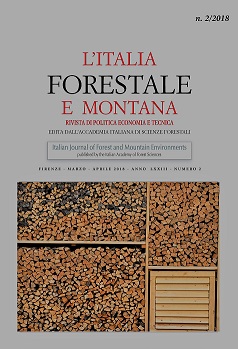Man and environmenMan and environment. Medieval events of great importance in the history of Southern Italy’s forests
Published 2018-06-22
Keywords
- medieval events,
- history of forests
Copyright (c) 2018 Italian Journal of Forest and Mountain Environments

This work is licensed under a Creative Commons Attribution-NonCommercial 4.0 International License.
Abstract
This study describes and analyzes in chronological order a number of events which occurred during the Mediaeval period and which are of great importance in the history of Southern Italy’s forests.
In the early 7th century, numerous large trees in the Sila were felled at the behest of Pope Gregory I. Each trunk was cut into a beam, which was then taken down to the Tyrrhenian coast and shipped to Rome to be used in the construction of St. Peter’s Basilica.
At the end of the 10th century, the trees to be felled in a private wood, located on the Amalfi Coast of the Sorrento Peninsula, were selected and identified. These actions were carried out in close conjunction with the owners of a shipyard, of the forestry enterprise chosen to perform the felling and subsequent operations, and of the lady owner of the woodland being felled, each of whom was able to act in his/her own best interests.
Lastly, in the first half of the 13th century, Emperor Frederick II of Hohenstaufen’s woodcutters and carpenters were unable to locate numerous large trees in the montane forests of Basilicata, whose trunks would have been used as beams for the roof of Lagopesole Castle.
The study ends with some final remarks on the silvicultural methods attributed to the different forest fellings examined.

